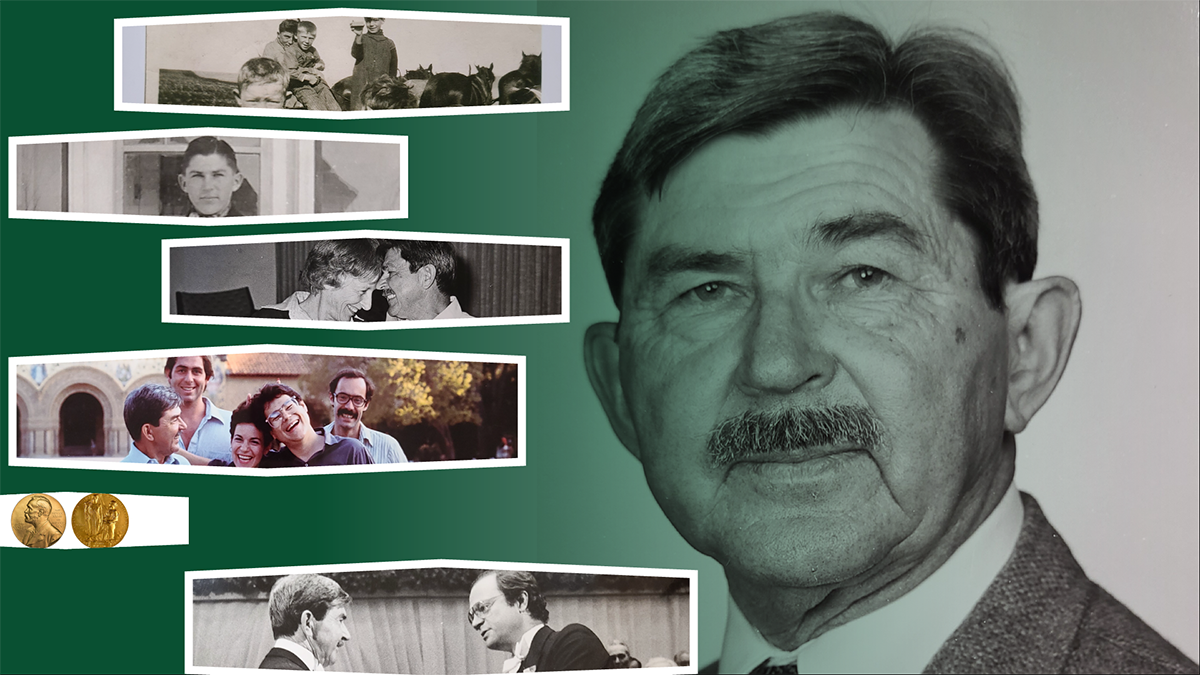
The life and legacy of Henry Taube, Nobel Prize winner
“Find Something to love and work at it really hard.” – Heinrich Taube, Henry’s son, from his Memorial Service on February 6, 2006 at Stanford University.
This story and video were created in partnership with Defining Moments Canada by USask graduate student Erin Matthews.
On October 19, 1983, The Royal Swedish Academy of Sciences announced that Henry Taube would be the sole recipient of the Nobel Prize in Chemistry for his work on the mechanism of electron transfer reactions in metal complexes. Taube’s work uncovered how electrons are exchanged between metals — an important step that facilitates chemical reactions such as redox reactions.
With his win, Taube joined fellow laureates like his colleague and friend Linus Pauling and former University of Saskatchewan physicist Gerhard Herzberg.
During his time at the University of Saskatchewan, Taube enrolled in two of Herzberg courses, atomic spectroscopy and nuclear physics. Taube appreciated Herzberg’s approach to teaching and described him as “the clearest lecturer that I had up to that time and perhaps the clearest ever.”
Taube is the only Saskatchewan-born laureate and, as of 2022, the only graduate of the University of Saskatchewan to win a Nobel Prize.
At the time of his win, Taube was a celebrated professor at Stanford University, a position he had held since 1961.
His Nobel-winning work on electron transfer reactions had begun years earlier while he was teaching a graduate course on inorganic chemistry at the University of Chicago. Intrigued by transition metals — elements with outer electrons that can participate in chemical reactions — Taube decided to incorporate them into his lectures. However, there was one problem — the ambitious young chemist needed to teach himself the material before presenting it to his students.
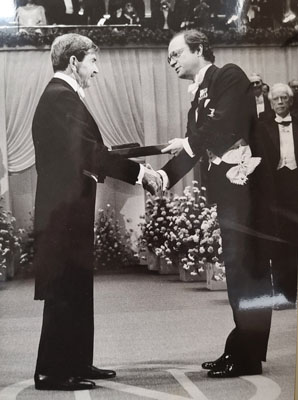
While reviewing the work on metal ion chemistry (atoms like iron and copper that have an electric charge), Taube noticed an interesting pattern in the transfer reactions and decided to focus on this problem during a sabbatical year. He travelled back to Berkeley, where he had obtained his Ph.D., and spent long hours in the library researching and writing.
He submitted his findings in an article that was published in Chemical Reviews in 1952.
Taube’s sabbatical work laid the foundations for experiments that allowed him to test his hypothesis on how electrons are transferred between metal complexes. Taube speculated that a bridge formed between two complexes, acting as a pathway for the electron transfer reaction.
His foundational work expanded the field of coordination chemistry (the study of compounds that have metal core surrounded by other molecules that can lend their electrons to the core) and had a significant impact on the scientific community. This discovery was only one contribution from Taube, whose career helped advance the understanding of electron transfer in proteins and polymers, photosynthesis, solar energy conversion, and chemiluminescence (chemicals that emit light).
He devoted his professional life to basic research in inorganic chemistry because it interested him greatly. Understanding how molecules work and laying the foundations that are critical to advancing scientific research brought Taube joy.
In his Nobel banquet speech, he reflected on his work and the source of his motivation: “As we continue to improve our understanding of the basic science on which applications increasingly depend, material benefits of this and other kinds are secured for the future. But the benefits of science are not to be reckoned only in terms of the physical. Science as an intellectual exercise enriches our culture and is in itself ennobling.”
___
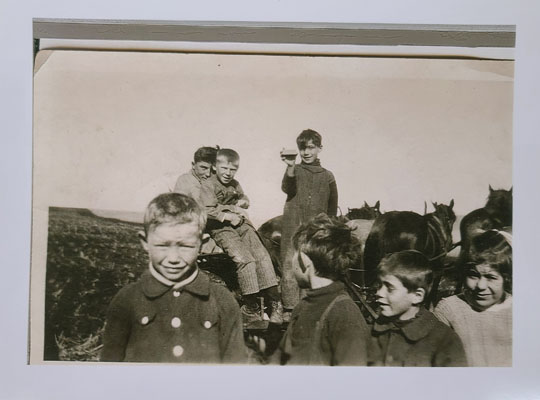
Born in a rented sod hut in the village of Neudorf, Saskatchewan, Taube was the youngest of four boys. His parents, Samuel and Albertina, had fled Russia in 1911 when rising political and cultural tensions made life for ethnic Germans in the Baltic region extremely precarious.
Taube grew up on the prairies, moving from Neudorf to Grenfell when he was a young child. He farmed with his father and his love of toiling in the soil followed him throughout adulthood. (An avid gardener, he was tending to his plants right up to his death, at age 89, in 2005.)
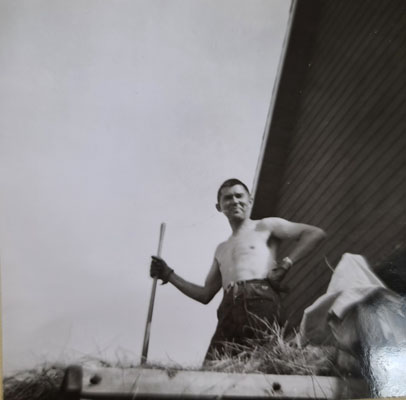
He began his high school education at Luther College in Regina, where he excelled in chemistry, physics, and math, but attended with the intention of joining the ministry.
An avid reader, Taube came across a book in the school’s library that argued against the theory of evolution. As an admirer of Charles Darwin’s work, Taube was disappointed by the book’s conclusions and decided to change course.
But Taube did not turn to chemistry, at least not at first. In a 2003 interview, he recalled his love of literature. Taube’s physics teacher, Mr. Berhens, would often recite Emily Dickinson in class and Taube was inspired by his enthusiasm for the written word. Taube recalled that they “talked mostly poetry, not physics.”
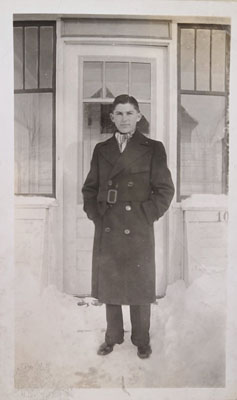
When he entered a master’s program, in 1935, Taube chose to focus on the field of inorganic chemistry because he was interested in foundational research. At the time, applied research and organic chemistry was the more popular choice — as it remains today — but Taube’s love of discovery propelled him forward.
When Taube arrived at the University of Saskatchewan, he had planned to register in a wide range of courses, with a focus on English literature. But on registration day, he encountered trouble. Confronted by an enormous crowd, Taube, who was shy and small, couldn’t find the correct registration queue.
While lost in a sea of students, Taube spotted a familiar face — a former classmate from Luther College. Taube asked him what he had registered in and when the boy responded, “Applied Chemistry,” Taube asked his classmate to show him the line.
___
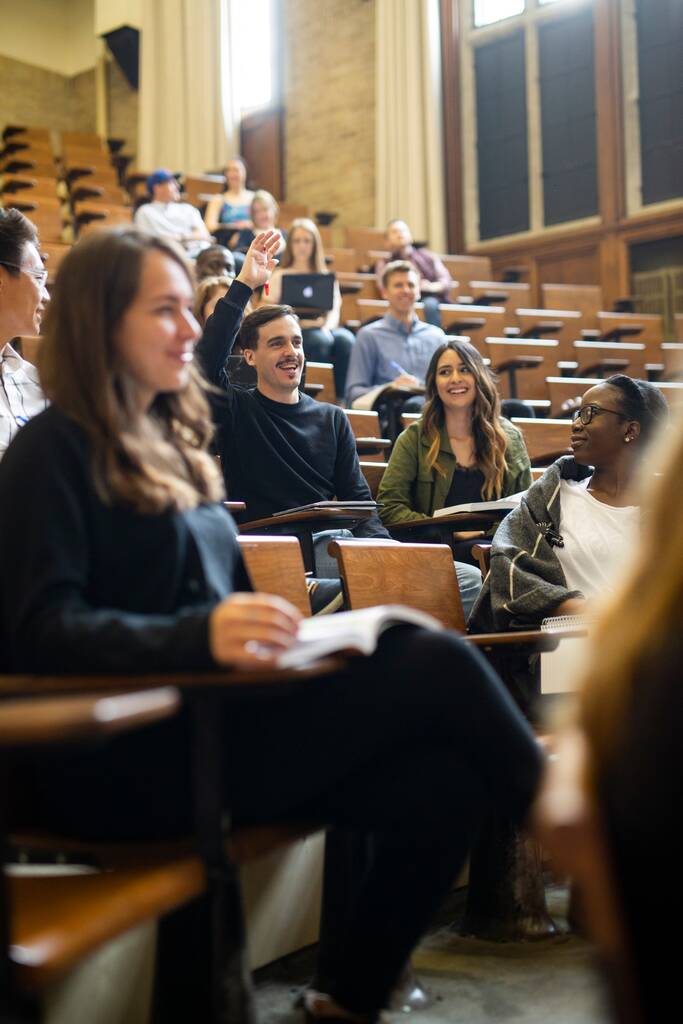
In 2013, the University of Saskatchewan dedicated a lecture theatre to Henry Taube in celebration of the 30th anniversary of his Nobel win. A plaque at the entrance of the Thorvaldson building reminds students of his life and legacy while the Nobel Plaza —located in front of the MacKinnon Building —celebrates the achievements of Taube and Herzberg.
Described as “one of the most creative research workers of our age in the field of coordination chemistry,” Nobel Laureate Henry Taube is remembered for his kindness, humour, and creativity, along with his extraordinary scientific achievements.
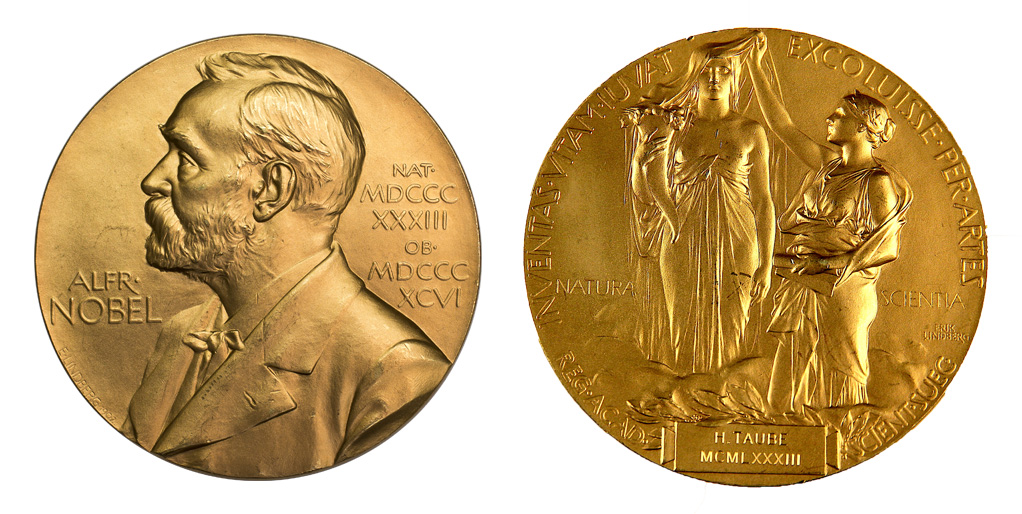
Upon his death in 2005, Taube's wife Mary donated his Nobel Prize medal, as well as his National Medal of Science, and his American Chemical Society Priestly Medal to USask Archives and Special Collections. Full story.
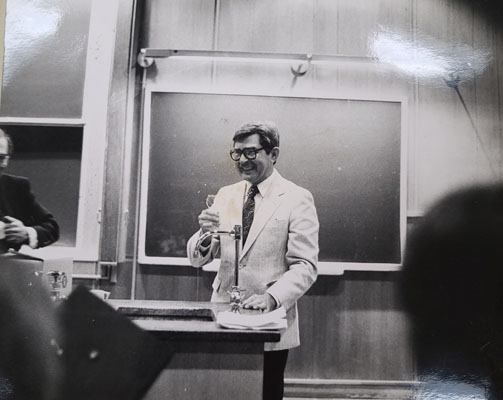
Erin Matthews is a master’s student at USask, supervised by Prof. Erika Dyck. Her research interests include the history of science and medicine. Her current research focuses on the discussion of “Spanish Influenza” in Saskatchewan newspapers during the pandemic of 1918 and the roles Saskatchewan women played in the public health effort. With a background in communications, Erin is passionate about public history and loves to explore stories about history, science and health.

